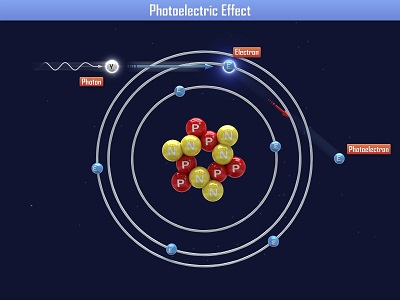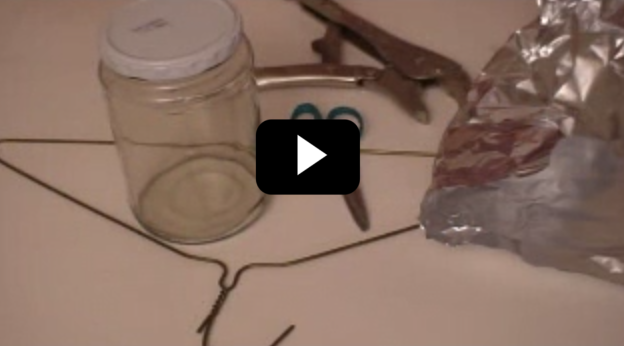The Triboelectric Effect is a type of electrification that happens when you rub two different materials together and then separate them. Often, one will take on a positive charge and the other a negative. But how do you know which is going to be which?
Please login or register to read the rest of this content.
Click here to go to next lesson on Electrostatic Motors.
You can use the idea that like charges repel (like two electrons) and opposites attract to move stuff around, stick to walls, float, spin, and roll. Make sure you do this experiment first.
I’ve got two different videos that use positive and negative charges to make things rotate, the first of which is more of a demonstration (unless you happen to have a 50,000 Volt electrostatic generator on hand), and the second is a homemade version on a smaller scale.
Did you know that you can make a motor turn using static electricity? Here’s how:
Please login or register to read the rest of this content.
Click here to go to next lesson on Coulomb’s Law.
Induction is another way to create a charge in an object. You can charge an object by induction without even touching it. I’ve got a couple of really neat experiments that will show you how this works, but here’s the basic idea: when you have two metal objects, like two soda cans, standing upright on a foam slab and just touching each other (so they are insulated from the table but in contact with each other), you can bring a charged balloon close to one of them and see a really interesting effect: the can closest to the charged balloon (which has a negative charge) will take on a positive charge, and the soda can furthest from the balloon will take on a negative charge. And when you separate the two cans, the charges on each will be evenly distributed over the surface of each can and remain polarized (the further can keeps its negative charge and the closer can keeps its positive charge). That’s charging by induction!
Please login or register to read the rest of this content.
When high energy radiation strikes the Earth from space, it’s called cosmic rays. To be accurate, a cosmic ray is not like a ray of sunshine, but rather is a super-fast particle slinging through space. Think of throwing a grain of sand at a 100 mph… and that’s what we call a ‘cosmic ray’. Build your own electroscope with this video!
Please login or register to read the rest of this content.
Jupiter not only has the biggest lightning bolts we’ve ever detected, it also shocks its moons with a charge of 3 million amps every time they pass through certain hotspots. Some of these bolts are cause by the friction of fast-moving clouds. Today you get to make your own sparks and simulate Jupiter’s turbulent storms.
Electrons are too small for us to see with our eyes, but there are other ways to detect something’s going on. The proton has a positive charge, and the electron has a negative charge. Like charges repel and opposite charges attract.
Materials
- Foam plate
- Foam cup
- Wool cloth or sweater
- Plastic baggie
- Aluminum pie pan
- Aluminum foil
- Film canister or M&M container
- Nail (needs to be a little longer than the film canister)
- Hot glue gun or tape
- Water
Click here to go to next lesson on Easy Photoelectric Effect Experiment
 Einstein received a Nobel Prize for figuring out what happens when you shine blue light on a sheet of metal. When he aimed a blue light on a metal plate, electrons shot off the surface. (Metals have electrons which are free to move around, which is why metals are electrically conductive. More on this in Unit 10).
Einstein received a Nobel Prize for figuring out what happens when you shine blue light on a sheet of metal. When he aimed a blue light on a metal plate, electrons shot off the surface. (Metals have electrons which are free to move around, which is why metals are electrically conductive. More on this in Unit 10).
When Einstein aimed a red light at the metal sheet, nothing happened. Even when he cranked the intensity (brightness) of the red light, still nothing happened. So it was the energy of the light (wavelength), not the number of photons (intensity) that made the electrons eject from the plate. This is called the ‘photoelectric effect’. Can you imagine what happens if we aim a UV light (which has even more energy than blue light) at the plate?
This photoelectric effect is used by all sorts of things today, including solar cells, electronic components, older types of television screens, video camera detectors, and night-vision goggles.
This photoelectric effect also causes the outer shell of orbiting spacecraft to develop an electric charge, which can wreck havoc on its internal computer systems.
A surprising find was back in the 1960s, when scientists discovered that moon dust levitated through the photoelectric effect. Sunlight hit the lunar dust, which became (slightly) electrically charged, and the dust would then lift up off the surface in thin, thread-like fountains of particles up ¾ of a mile high.
Please login or register to read the rest of this content.
Click here to go to next lesson on Charging by Induction and Conduction.
Ygou can also charge objects by conduction. You’ve actually already done with without really thinking about it. The foil on the wire coat hanger in the electroscope was being charged by conduction. When you touch a charged balloon to the foil ball on the electroscope, that’s a charge by conduction. If you were to get the charged balloon really close but not touching the foil ball, that would be charging by induction. (See the difference?) Charging by conduction just means that you need to touch the electrically neutral object to the one that is charged to transfer the charge. It’s charge by contact.
With charge by induction, it’s the forces due to likes repelling and opposites attracting that cause the charge in objects. With conduction, it’s the actual movement of electrons to the object that make the charge in the object. This is obvious if you think about touching two soda cans together, since they are both made out of a material that allows electrons to move about freely within the material (on the surface of the object). But what about two insulators, like two foam plates? What happens then?
Please login or register to read the rest of this content.

